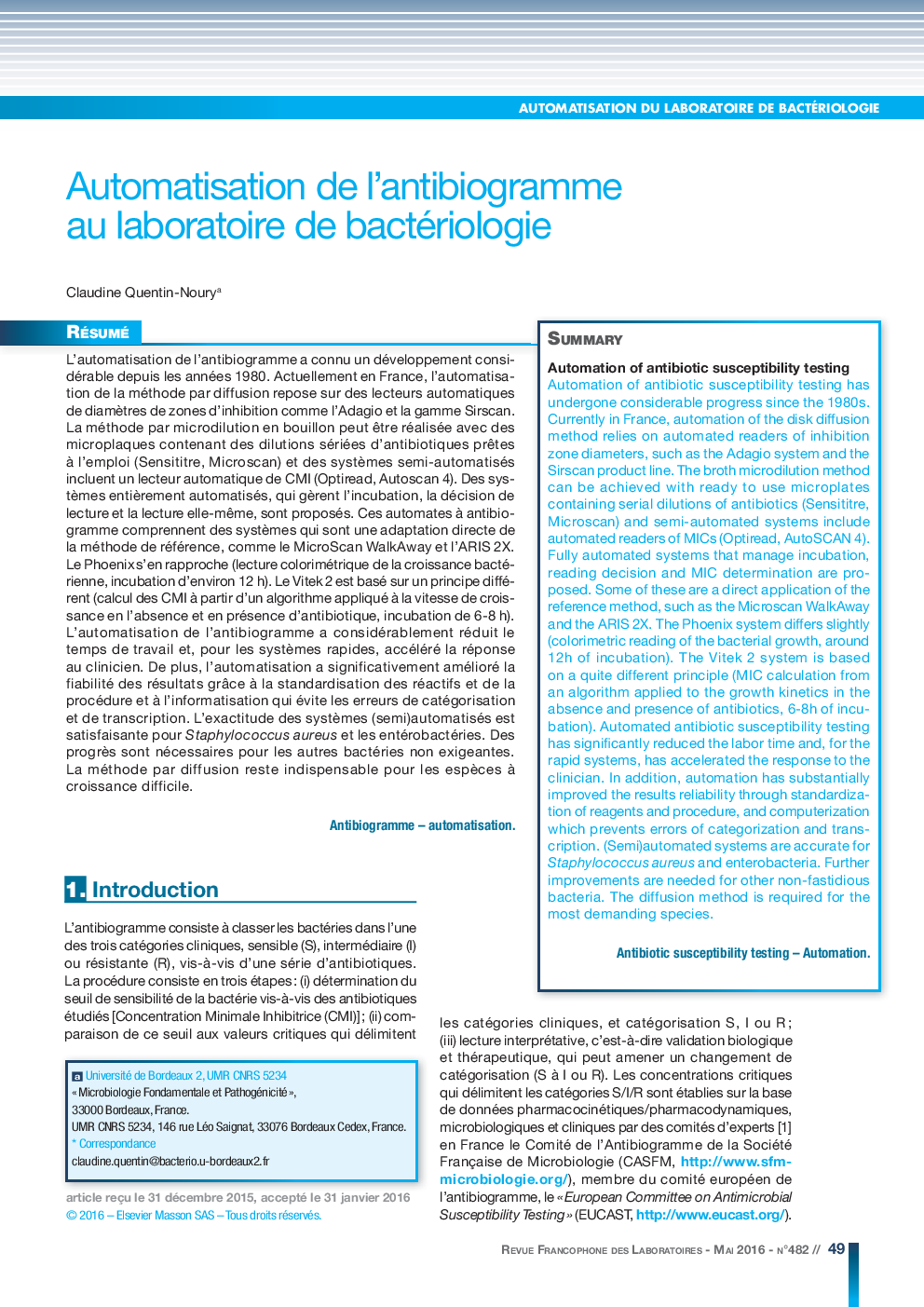| کد مقاله | کد نشریه | سال انتشار | مقاله انگلیسی | نسخه تمام متن |
|---|---|---|---|---|
| 7646334 | 1495037 | 2016 | 11 صفحه PDF | دانلود رایگان |
عنوان انگلیسی مقاله ISI
Automatisation de l'antibiogramme au laboratoire de bactériologie
دانلود مقاله + سفارش ترجمه
دانلود مقاله ISI انگلیسی
رایگان برای ایرانیان
کلمات کلیدی
موضوعات مرتبط
مهندسی و علوم پایه
شیمی
شیمی آنالیزی یا شیمی تجزیه
پیش نمایش صفحه اول مقاله

چکیده انگلیسی
Automation of antibiotic susceptibility testing has undergone considerable progress since the 1980s. Currently in France, automation of the disk diffusion method relies on automated readers of inhibition zone diameters, such as the Adagio system and the Sirscan product line. The broth microdilution method can be achieved with ready to use microplates containing serial dilutions of antibiotics (Sensititre, Microscan) and semi-automated systems include automated readers of MICs (Optiread, AutoSCAN 4). Fully automated systems that manage incubation, reading decision and MIC determination are proposed. Some of these are a direct application of the reference method, such as the Microscan WalkAway and the ARIS 2X. The Phoenix system differs slightly (colorimetric reading of the bacterial growth, around 12h of incubation). The Vitek 2 system is based on a quite different principle (MIC calculation from an algorithm applied to the growth kinetics in the absence and presence of antibiotics, 6-8h of incubation). Automated antibiotic susceptibility testing has significantly reduced the labor time and, for the rapid systems, has accelerated the response to the clinician. In addition, automation has substantially improved the results reliability through standardization of reagents and procedure, and computerization which prevents errors of categorization and transcription. (Semi)automated systems are accurate for Staphylococcus aureus and enterobacteria. Further improvements are needed for other non-fastidious bacteria. The diffusion method is required for the most demanding species.
ناشر
Database: Elsevier - ScienceDirect (ساینس دایرکت)
Journal: Revue Francophone des Laboratoires - Volume 2016, Issue 482, May 2016, Pages 49-59
Journal: Revue Francophone des Laboratoires - Volume 2016, Issue 482, May 2016, Pages 49-59
نویسندگان
Claudine Quentin-Noury,